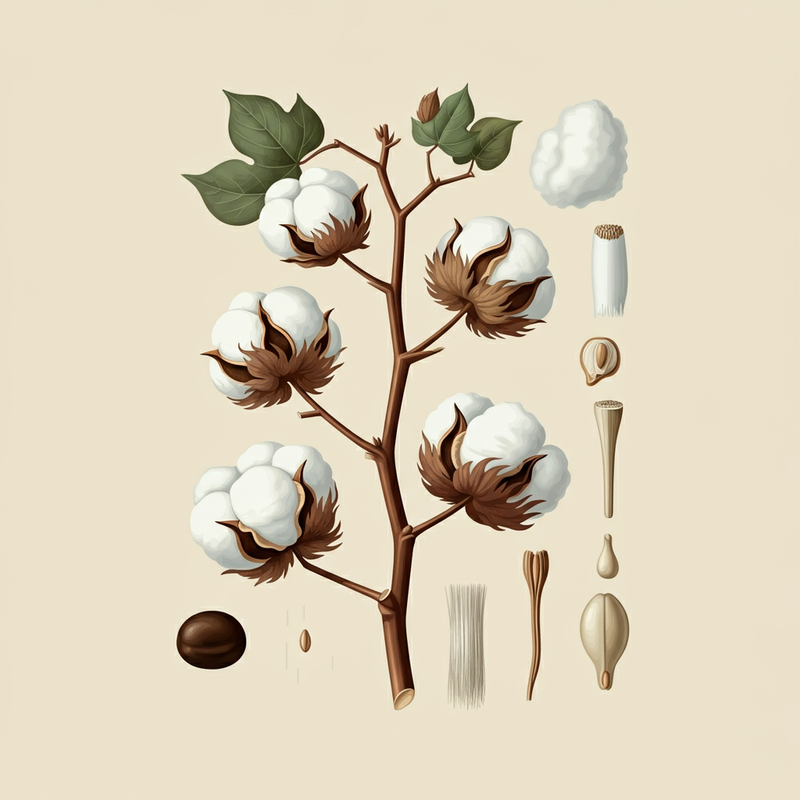
Cotton is Among the most greatly used fibers on this planet, and its origins could be traced again to historical times. Archaeologists feel cotton production began in India over five,000 decades in the past when cotton plants were cultivated for cotton fibers and woven fabrics.
In the late medieval period, cotton became known as an imported fiber in northern Europe, without any familiarity with how it absolutely was derived, aside from that it had been a plant. Because Herodotus experienced created in his Histories, Ebook III, 106, that in India trees grew from the wild manufacturing wool, it was assumed the plant was a tree, as opposed to a shrub. This aspect is retained during the name for cotton in several Germanic languages, for instance German Baumwolle, which interprets as "tree wool" (Baum signifies "tree"; Wolle suggests "wool").
The technique for weaving cotton yarn into material is similar to that for other fibers. Cotton looms interlace the tense lengthwise yarns, referred to as warp, with crosswise yarns called weft, or filling. Warp yarns frequently are taken care of chemically to forestall breaking during weaving.
Differing types of fibers are created up of differing types of molecules. Most animal fibers are made of proteins.
Employing resources like microarray Investigation, scientists can understand which genes are switched on and off in different tissues over time (impression courtesy Udall lab).
Personnel form through cotton to get rid of contaminants. The workers dress in masks to cut back the quantity of fibers they inhale. Cotton is used to produce many textile products and solutions. These include things like terrycloth for really absorbent tub towels and robes; denim for blue jeans; cambric, popularly used during the manufacture of blue perform shirts (from which the term "blue-collar" is derived) and corduroy, seersucker, and cotton twill. Socks, underwear, and many T-shirts are produced from cotton. Bed sheets usually are produced from cotton. It is just a most popular product for sheets as it truly is hypoallergenic, easy to maintain and non-irritant towards the skin.[95] Cotton is also used to produce yarn used in crochet and knitting.
Indian cotton textiles, notably those from Bengal, continued to take care of a aggressive benefit up right until the nineteenth century. So that you can contend with India, Britain invested in labour-conserving technical development, while applying protectionist guidelines which include bans and tariffs to limit Indian imports.[45] At the same time, the East India Company's rule in India contributed to its deindustrialization, opening up a completely new market for British items,[45] while the funds amassed from Bengal following its 1757 conquest was used to invest in British industries for instance textile production and significantly enhance British prosperity.
[40] The production of cotton, which can have mainly been spun within the villages and afterwards taken to towns in the shape of yarn to get woven into cloth textiles, was advanced by the diffusion from more info the spinning wheel across India Soon ahead of the Mughal era, reducing the costs of yarn and encouraging to enhance desire for cotton. The diffusion of the spinning wheel, as well as the incorporation of the worm gear and crank handle to the roller cotton gin, brought about drastically expanded Indian cotton textile output over the Mughal era.[41]
Supima® cotton is usually used in fine bed linens and towels, presenting an opulent sense and prolonged-lasting high quality.
Its large tensile power and resilience add to its longevity. Mixing with polyester or Particular finishes can improve its Attributes further. These properties make cotton a flexible preference within the textile sector.
Bleached cotton linters fibers are used For a lot of apps in paper industry. It is actually used by yourself or combined with other pulps, for apps for instance technological papers, safety paper, insulating paper, filter paper, non-woven fabrics and great papers for instance art paper. Superior quality printing & crafting papers will also be made from cotton linters pulp.
Natural cotton is of course cultivated and harvested, without having synthetic fertilizers or pesticides used in the course of its development. This environmentally friendly product derives from non-GMO crops which might be freed from manipulation.
Cotton combers, squander from combing equipment used in textile field, are long fibers (up to 2cm). Cotton threads and cotton rags allows acquiring very long fibers. Both of these are typically wastes from textile business. These fibers are used for extremely higher valuable papers for example lender Observe paper.
We've built sheets of paper from cotton linters from several pulp mills and have discovered our recent provider to possess the very best quality pulp. Our 225HL-M comes from that mill. It can certainly be processed right into a usable pulp inside of a blender or maybe a hydro-pulper, however the resulting paper has a tendency to be softer and bulkier than when beaten inside a Hollander beater. The limited fiber of 2nd Lower linters makes it quite beneficial to choose up information in casting or other kinds of paper sculpture.